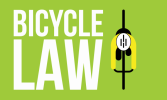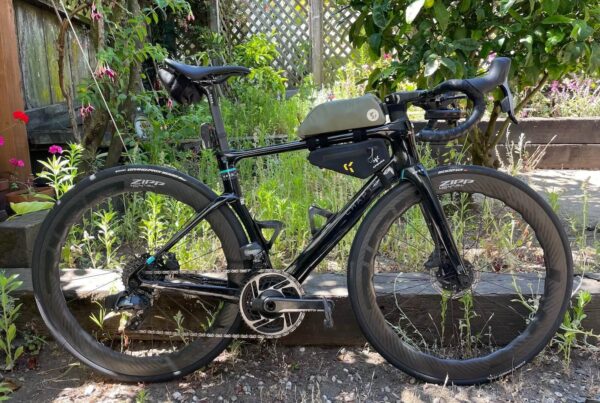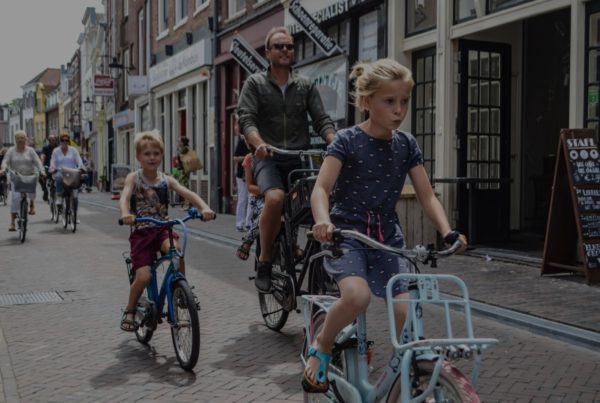By Bob Mionske
Car culture epitomizes the American love affair with the automobile, and no place quite epitomizes car culture like Southern California.
Which makes what has been happening in Los Angeles lately all the more remarkable. It began with the emergence of a thriving underground bike culture. We’re not just talking roadies training in the year-round Southern California sunshine. We’re talking mass late-night bike rides through Los Angeles, volunteer-run community bike repair shops like the Bicycle Kitchen and Bikerowave, and direct, bold, and apparently legal challenges to auto-centric assumptions.
And this emerging bike culture has begun to make its presence felt within the system, too. It began with grassroots organizing to lobby for a Cyclist’s Bill of Rights—an effort that made promising headway at first but ultimately stalled because of opposition on the Los Angeles City Council.
Undeterred, bicycle activists continued their involvement in bike advocacy, rebelling against a proposed 2010 Los Angeles Bicycle Plan, which they considered to be grossly inadequate for its piecemeal approach to bicycle infrastructure.
Taking matters into their own hands, local activists Bikeside LA organized a volunteer “Bike Working Group” to draft their own bike plan, which they dubbed “The Backbone,” after its main element—a backbone network of bikeways connecting Los Angeles. Despite initial opposition from the city, Los Angeles bicycle activists rallied to push for their preferred bike plan. This past March, the City Council unanimously approved a new bicycle plan centered on the Backbone Bikeway Network. Mayor Villaraigosa signed the plan the next day.
It wasn’t everything Los Angeles cyclists wanted—conspicuously absent was the Cyclist’s Bill of Rights, which Alex Thompson of Bikeside LA pointed out “simply collects together cyclists rights that are already in the law, so there’s really no reason why they shouldn’t be in there.”
That wasn’t the end of bike activism in Los Angeles. If anybody doubts the appeal of the emerging Los Angeles bike culture, consider this: In October of 2010, Los Angeles closed off 7.5 miles of streets to automobile traffic for the first CicLAvia. 100,000 Angelenos took to the streets on bikes, skateboards, and foot. 100,000. And that was no fluke. In April, more than 100,000 Angelenos turned out for the second CicLAvia.
The demand for car-free streets—in the very heart of Southern California “car culture” no less!—was so massive that CicLAvia organizers canceled the July 2011 event so they could focus on expanding the route for the October 2011 CicLAvia.
Even with the July CicLAvia canceled, Los Angeles cyclists still had something massive to celebrate. On Thursday, July 21, the Los Angeles City Council passed an anti-harassment law that is the first of its kind in the nation.
This is huge.
The Los Angeles cyclists’ anti-harassment law borrows thematically from the Cyclist’s Bill of Rights and adds some real teeth to the enforcement of the law. Here, in part, is what the new law provides:
- Prohibits physically assaulting or attempting to physically assault a bicyclist.
- Prohibits threatening to physically injure a bicyclist.
- Prohibits intentionally injuring, attempting to injure, or threatening to physically injure, either by words, vehicle, or other object, a bicyclist.
- Prohibits intentionally distracting or attempting to distract a bicyclist.
- Prohibits intentionally forcing or attempting to force a bicyclist off a street for purposes unrelated to public safety.
If somebody commits one of the prohibited acts against a cyclist because the cyclist is riding a bike—even if that is only part of the reason for the threat or assault—the law has been violated. And the law doesn’t just prohibit these acts. If somebody harasses a cyclist in violation of this law, the cyclist can now sue the harasser in civil court. This means that if you are the victim of harassment, you don’t have to plead with the police or the district attorney to do something about it. You can bring your harasser to justice yourself.
The law also provides that cyclists can sue for damages that are three times their actual damages, or $1,000, whichever is higher, for each violation. In addition, the harassed cyclist can receive attorneys’ fees, and a jury or court is authorized to order punitive damages as well.
These provisions are important. Cyclists haven’t just gained the statutory right to sue; they’ve gained an important tool to enforce that right—triple damages, punitive damages, and attorneys’ fees. This means that cyclists who have been harassed will have the means to hire an attorney to represent them and because they can hire an attorney, they can bring their harassers to justice. As I said, this is huge—something that every cyclist who has pleaded with indifferent police and prosecutors to file charges can attest.
Perhaps most important, the law sends a powerful message to those who would use violence to force us from our lawful place on the roads: You can and will be brought to justice.
And that message is being heard. Howls of outrage arose in online comments, with the complaint being that “cyclists break the laws”—as if that somehow justifies assaulting random strangers. TheLos Angeles Daily News used the same logic, expressing its dismay that the City Council was more concerned about violent assaults against cyclists who are exercising their lawful rights to use the road than it was about “bad cyclists.”
The truth is, people break the laws, whether they’re cyclists, motorists, or pedestrians. However, those who object to the anti-harassment law on the grounds that cyclists break the law are essentially arguing that violent assaults against cyclists are justified and should not be prosecuted. Ironically, the arguments against the anti-harassment law serve as some of the most powerful evidence of the need for the law.
But in a sign of the massive change that is taking place in Los Angeles, mainstream opinion was strongly in support of cyclists.
Cyclists across the country should be looking on with interest because what Los Angeles cyclists have accomplished with this new law is a new benchmark for justice that should be adopted across the land.
Congratulations, Los Angeles, and good luck!
Research and assistance by Rick Bernardi, J.D.
Connect with Bob on Facebook!
This article, L.A. Ordinance, was originally published on Bicycling on August 9, 2011.



